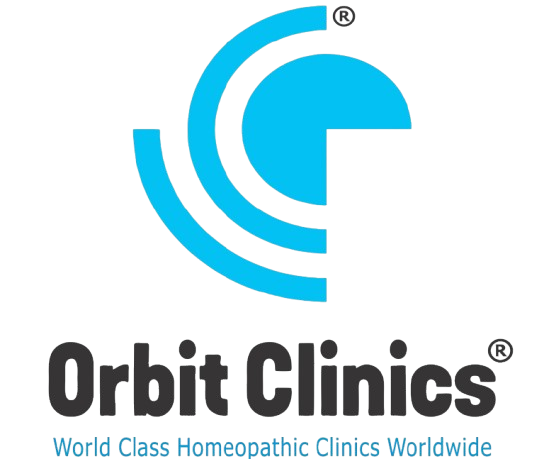Arthritis and osteoarthritis are different
Arthritis is a general term which describes inflammation of joints. Osteoarthritis, a degenerative joint disease, is the most common type of arthritis.
Osteoarthritis Myth Buster
Osteoarthritis (OA) has been considered as a wear & tear disorder of joints, part of ageing process. But it is not the result of progressing age alone, rather a consequence of multiple factors which could be changed or prevented to a great extent.
OA is characterised by breakdown of the cartilage (cushions between joints), bony changes of the joints, deterioration of tendons and ligaments and inflammation of synovium (joint lining). As Osteoarthritis worsens, bones may harden, change shape and get bumpy but when cartilage breaks down, it doesn’t grow back on its own.
Factors that contribute to development of OA:
- Getting older
- Joint injury
- Overuse –Using the same joints over and over because of a job or sports
- Obesity – Extra weight puts more stress on a joint
- Weak muscles – Joints might get out of the right position when there’s not enough support.
- Positive family history
- Female gender
- Bone deformities
Signs & Symptoms
OA usually affects the commonly used joints, namely hands, knees, hip and spine leading to complaints developing gradually, like –
- Pain, swelling and stiffness of joints felt more after rest
- Grinding noise during joint movement
- Difficulty initiating movement of the joint after long inactivity
- Muscle weakness around the joints leading to joint instability like buckling (knee gives out).
Characteristic symptoms experienced at joints affected by OA
- Hips – Pain felt in the groin area or buttocks and sometimes on the inside of knee or thigh.
- Knees – A “grating” or “scraping” feeling when moving the knee is felt
- Fingers – Bony growths (spurs) at the edge of finger joints leading to swelling, tenderness and redness. There might be pain at the base of the thumb too.
- Toes – The big toe feels painful and tender. Swelling of ankle or toes might also be present.
Stages of Osteoarthritis development
Early Stage
Cartilage starts thinning. Though it has no nerves but as friction starts to affect the bone underneath, the complaints begin to show up.
Moderate Stage
Pain tends to worsen as the cartilage wears down, the bones underneath become thicker and bony spurs form along joint margins, limiting physical activity making muscles eventually weaker, providing less support to the joints.
Late Stage
All the joint structures are affected. Lubricating fluid is lost and the affected joint may get filled with inflammatory fluids that stretch the joint capsule, causing swelling, more pain and stiffness.
Complications
Depending on which joints are affected, osteoarthritis can cause difficulty standing, walking, turning knobs or keys and opening jars apart from just pain. Other adverse effects can be
Sleep disruption
Pains, stiffness and difficulty moving interfere with sleep. Disturbed sleep intensifies sensation of pain.
Reduced productivity
Many people miss multiple days of work per year because of chronic joint pain. This can also result in a decreased ability to perform normal everyday activities such as:
- household chores
- cooking
- getting dressed
- exercise and other activities
Weight gain
It may cause a decreased ability to exercise or even walk resulting in weight gain and subsequently to side effects of obesity
Other complications
- bone death
- stress fractures
- bleeding or infection in joints
- deterioration of tendons and ligaments around joints
- pinched nerve, in OA of the spine
Prevention
Maintain healthy weight
Excess weight puts additional pressure on weight-bearing joints, such as the hips and knees. Each pound one gains add nearly four pounds of stress on knees and increases pressure on hips by six-fold. But mechanical stress is not the only problem of obesity. Fat tissue produces proteins called cytokines that promote inflammation throughout the body.
Control Blood Sugar
High blood sugar levels speed the formation of certain molecules that make cartilage stiffer and more sensitive to mechanical stress.
Get Physical
30 minutes of moderate exercise five times a week helps strengthen the muscles to support and stabilize the joints. Start small, like with 10 minutes every other day. If you don’t have pain, exercise more to meet the goal. Consult a doctor or physical therapist before starting a new exercise program.
No matter what type of exercise you choose, listen to your body. If it pains after exercise for more than an hour or two, do less next time and take more breaks. To avoid injury, go slow until you know how your body reacts to a new activity and don’t repeat the same exercise every day.
Protect Joints
At home or work, use your largest, strongest joints for lifting and carrying. Watch your step to prevent falls. Balance rest and activity throughout the day.
The Bottom Line – Choose a Healthy lifestyle, the best defence against any disease
Diet, exercise, sleep, manage stress, alcohol intake and smoking as they can have a tremendous influence on the health of your joints.
Coping with Osteoarthritis
When you know you have osteoarthritis, it’s hard to know how fast it may progress. At times you may feel overwhelmed, tired and angry. You may be afraid that you might become disabled and not be able to care for yourself. You may even wonder if you’ll be able to continue to work. Most people who have arthritis feel this way at one time or another.
Treating these symptoms may make it easier for you to do your daily tasks and the good news is that you can also do some simple things to feel better.
- Ask your family and friends for help especially on days when you have a lot of pain.
- Balance activity with rest – Break the task down into smaller tasks and rest between them
- Learn ways to reduce stress – as it can make your pain feel worse
- Be creative – Do the things you enjoy in a different way that doesn’t cause pain.
- Keep a pain diary – Write down how your moods, thoughts, sleep patterns, activities, and medicine affect your pain. Having a record of your pain can help you and your doctor find the best ways to treat your pain.
General management techniques
Protection, rest, ice, compression and elevation (PRICE)
This may help the commonest affected joint by osteoarthritis – knee
-
- Protection refers to protecting the knee from further injury
- Rest give tissues time to heal. However, stopping all movement is not advisable, as this can lead to stiffness and muscle weakness.
- Ice can help reduce swelling and inflammation. It should be wrapped in a cloth and applied for 20 minutes several times on the first day of injury.
- Compression with a knee support can increase comfort levels. The support or bandage should be firm but not tight.
- Elevation or keeping the leg raised will encourage circulation and reduce swelling.
Supportive devices
Finger splints and braces can reduce joint stress, relieve pain and improve mobility. Crutches or walkers can improve walking ability. Symptoms of osteoarthritis of the spine can be relieved by using a firmer mattress with back bracing or with a neck collar.
Conventional treatment – The right choice??
Relieving the pain with pain killers and steroids or even going for a knee replacement might seem easier and a quick way to bring comfort but WATCH OUT!!
- Pain killers relieve pain but doesn’t reduce swelling or inflammation associated with OA. Moreover, they can lead to nausea, heartburn, gastric ulcers, constipation, dizziness, drowsiness, even liver and kidney damage. With time, body develops resistance and needs higher dosage which can be addictive too.
- Prescription NSAIDs reduce swelling and inflammation but might lead to serious renal, hepatic and gastric issues. Even more, if taken in high doses, can increase the risk of heart attack or stroke.
- Antidepressants are also prescribed even in the absence of depression, to treat chronic pain of OA. The exact way it helps curb pain is not known, but brain chemicals affected are thought to play a role. Some common side effects include nausea, dry mouth, sleepiness, weight changes and constipation. All antidepressant drugs carry a boxed warning of increased risk of suicidal thinking and behaviour in children, adolescents and young adults. BEWARE!!
- Injectable corticosteroids or “steroids” are injected directly into a joint to help ease inflammation and pain. They act quickly but might result in allergic reactions, infection, bleeding and skin changes.
- Topical treatment might produce some skin irritation so should never be applied to broken or irritated skin and keep them away from your eyes and mouth.
- Knee replacement is recommended if other treatments have not provided relief. The surgeon removes the damaged cartilage and bone before implanting an artificial joint comprising metal, plastic and other synthetic materials. As with any surgical procedure, it also carries risks which range from infection, allergic reaction and pain to blood clots. Scar tissue or other complications can sometimes affect motion in the knee. A new joint can loosen, wear out or lose its stability. If the joint fails, the person is likely to experience continued pain and stiffness. They might need another procedure to replace it.
Homoeopathic management
Homoeopathy is thought to have slow effects in relieving pain but the Homoeopathic medicines do not intend to remove the pain alone, as that alone doesn’t suffice the needs of the patient. Homoeopathy, instead, intents to remove the cause behind the sufferings of the patient so that relief is brought about to such a great extent that it doesn’t affect normal daily life routine and the patient is able to carry out his functioning with minimal aid.
As far as the condition of Osteoarthritis is concerned, along with the general management tips discussed above, Homoeopathic medicines help treat the underlying pathology like the wear and tear, inflammation, injury etc. which, in turn, annihilates the pain and that too without any side effects. This is the correct mode of treatment whereby the cause is addressed to remove the effects and not the effects only are removed just to provide the time-being relief. This needs to be decided by the patient what is really required – step-by-step long-term relief in the condition as a whole or instant temporary relief in pain.
There are number of Homoeopathic medicines which are used to treat OA selected on the basis of complaints an individual is suffering from. A detailed case history is taken from the patient comprising of all the information required to prescribe the most suitable medicine. Moreover, Homoeopathic remedies can address the associated risk factors efficiently too, which increases the risk of encountering OA, like obesity, Diabetes. If the complaints that prone to occurrence of Osteoarthritis are under control, the prevalence and rate of progression can be regulated.
“Osteoarthritis is the most common cause of disability in older people if left untreated. Though it cannot be completely cured but right therapy slows down the progression and helps improve quality of life”




